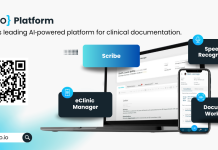Iouri Prokhorov, CEO at Helastel, explores how a people-first approach is key to enhancing the public sector’s digital transformation process
Information technology is now central to the public sector – that statement is true of any body, local or national, that provides public services.
The multi-faceted adoption of technology that contributes to enhancing services and productivity has earned the now-familiar term ‘digital transformation’. While this movement has been taking place for years, we are now at a peak moment as – catalysed by the pandemic and the need for remote working and online services – public bodies are seeking how to further bolster and enhance their digital capabilities to benefit staff and citizens.
Now is the time
However, digital transformation isn’t as simple as implementing new technologies, and the public sector can meet many challenges during this process which leads them to failure. This was highlighted in a study by Boston Consulting Group which found that 70% of digital transformations failed to meet their objectives, while a report from the National Audit Office found that just a small number of senior government officials have experience of digital business change, increasing the likelihood of digital transformation projects failing to deliver what’s needed.
Many transformation projects are set back because decision-makers perceive it as being solely about implementing new technology, overlooking where investment is needed to truly make an impact, particularly when it comes to staff adoption.
Investing in new solutions is rarely a valuable endeavour unless staff are willing to adapt and harness these platforms. As such, decision-makers within public sector organisations need to consider the cultural change required to drive adoption, integration, use, and scale if they want an effective transformation to take place.
Putting people at front of mind
This requires those leading the transformation process to take a people-first approach when adopting and implementing new solutions. Prioritising staff, processes and culture in a digital transformation strategy ensures everyone in a department has an understanding of the changes made, where improvements are required and how effective these will be.
To do this, employees should be made a part of the transformation process right from the beginning. Involving staff – making them aware of the challenges and the transformation process ahead and continuous engagement – will help them understand the benefits of the new solutions being put in place and how to harness them effectively.
The importance of human resources
At the same time, HR has a key role to play in helping staff through the digital transformation process. Training and upskilling may be necessary to ensure employees understand how to use new platforms once they’re implemented, while concerns and questions need to be addressed to give staff peace of mind and confidence.
As such, HR departments need to be available to communicate with staff from the very beginning to guarantee workers are ready and able.
Choosing the right leader
Finally, while decisions regarding digital transformation may be made from senior officials, that doesn’t mean that these individuals have the right tools and capabilities to lead staff through this process. Simply parachuting someone in whom employees may be wary of or do not trust could alienate them and scupper any attempts to implement new solutions and onboarding of these.
Selecting a designated leader who commands the respect of employees across the organisation, while at the same time being open and communicative, will help inspire the workforce to get behind a digital transformation and be willing to be a part of this change.
Technology is increasingly becoming the life-blood of the public sector no matter which department it is. Digital transformation is more necessary than ever before for public bodies to keep up with the times and provide the best possible services to citizens, but doing this in the right way so that it truly benefits a company is vital.
Rather than focussing on technology, staff need to be front and centre of the transformation process in order to drive these projects forward. A people-first approach will ensure all public sector organisations’ digital transformations are successful, long-lasting and beneficial for everyone.











